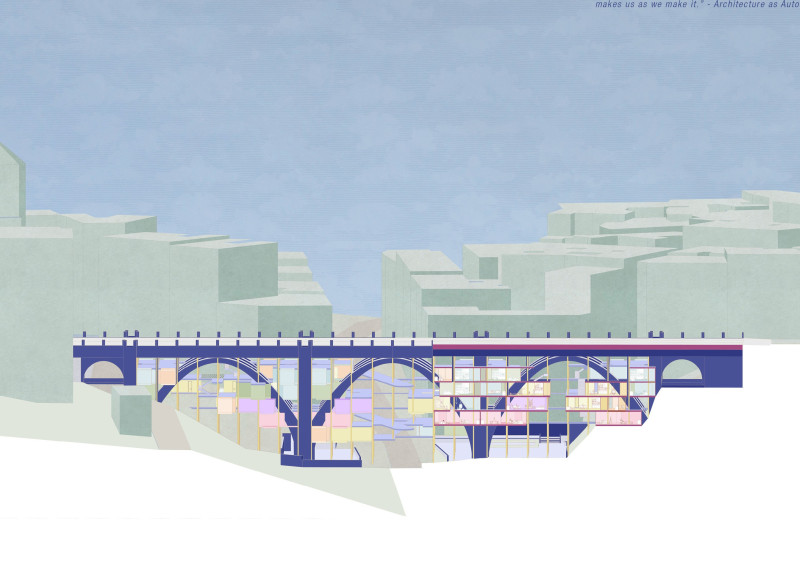5 key facts about this project
At the core of this architectural endeavor is a commitment to a modern aesthetic that integrates seamlessly with the existing landscape. This integration is achieved through a careful selection of materials that resonate with both the urban environment and the natural elements surrounding the site. The exterior façade is primarily composed of locally sourced timber and natural stone, which not only enhances the visual appeal but also supports sustainability by minimizing the carbon footprint associated with transportation. Glass elements are strategically incorporated to maximize natural light penetration, creating a warm and inviting atmosphere while promoting energy efficiency.
Unique design approaches are evident in the project's layout, which emphasizes open spaces and fluid movement throughout the building. The floor plan is designed to foster collaboration and interaction, with communal areas that invite users to gather and engage. The incorporation of green spaces, including terraces and vertical gardens, underscores a commitment to biophilic design principles, encouraging occupants to connect with nature even in an urban setting. These elements contribute to the overall well-being of users by providing restorative environments that can enhance creativity and productivity.
The architectural designs reflect a meticulous attention to detail, with each aspect of the project carefully considered. The use of natural light as a design element is not merely functional; it shapes the user's experience within the space, guiding their movement and influencing their perception of the overall ambiance. High ceilings and expansive windows create a sense of openness, while carefully placed overhangs provide shade and regulate temperature, reducing reliance on artificial climate control.
Incorporating innovative technologies, the project also addresses modern challenges related to energy consumption and environmental impact. Smart systems for heating, lighting, and water management are integrated into the architectural framework, ensuring that the building not only meets contemporary standards for sustainability but pushes toward a future where architecture actively contributes to ecological health.
Furthermore, the project includes consideration for accessibility, ensuring that all users can navigate the space without barriers. Features such as ramps, elevators, and tactile surfaces demonstrate a commitment to inclusivity, recognizing the diverse needs of the community it serves.
As one delves deeper into the project presentation, there is a wealth of architectural plans, architectural sections, and architectural ideas that illuminate the extensive thought process behind this endeavor. The interplay of form, function, and context speaks volumes about the intention to create a space that is not only beautiful but also functional and sustainable. This balance of aesthetics and utility is a hallmark of architectural excellence, inviting further exploration into how it effectively responds to the environmental and social contexts in which it resides.
For a better understanding of this multifaceted project, readers are encouraged to explore the detailed architectural plans, sections, and designs that outline the innovative ideas and concepts employed throughout the project. The thoughtful integration of these elements reflects contemporary architectural practices and serves as a model for future developments within urban environments.























